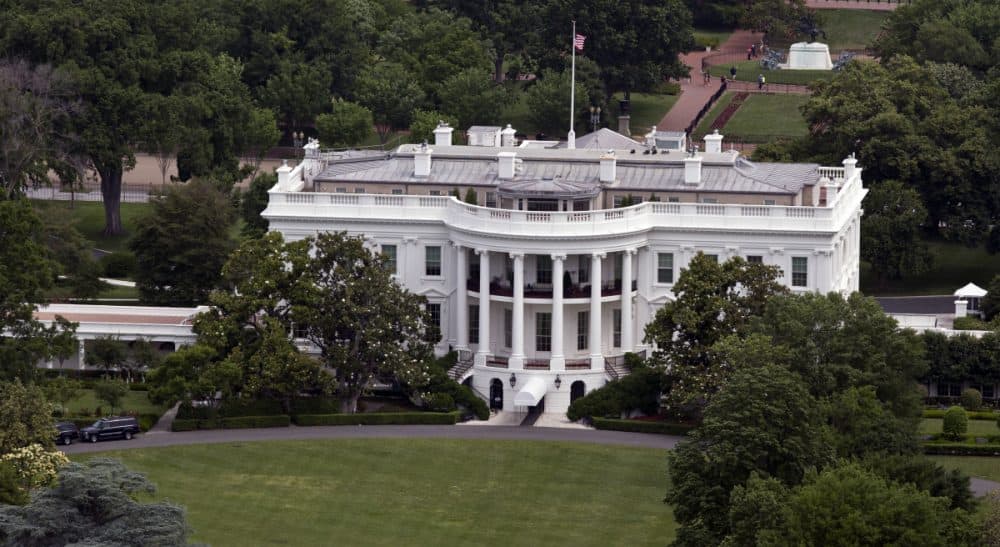Advertisement
The Road To The White House Needs Paving

Quiz question 1: What do Bernie Sanders and Ronald Reagan’s top economic guru have in common? The socialist senator and conservative economist both want to pour $1 trillion into fixing dilapidated roads, bridges, harbors, airports and rails.
Question 2: Which one of these things is not like the others: Sanders, Reagan’s guy and Chris Christie? It’s New Jersey Gov. Christie, who cared so little for infrastructure that he scrapped a new rail tunnel linking his state and Manhattan. This week, as electrical problems stalled trains in existing, century-old tunnels, Jersey commuters clamored for their governor’s neck.
the American Society of Civil Engineers has long warned of the safety and economic costs of our deteriorating infrastructure.
With Sanders and Christie running for president, it looks like the question of who’ll rebuild America will be a marker defining the wise from the foolish. Here’s hoping more candidates second Sanders; the fact that a polar political opposite like Reagan aide and Harvard economist Martin Feldstein agrees with the Vermont senator should tell you something. It also begs explaining why Feldstein, who chaired Reagan’s Council of Economic Advisers, wants to spend like, well, a socialist on this issue.
For an answer, look to New Jersey. Shortly after taking office in 2010, Christie aborted plans for a new rail tunnel under the Hudson River to New York’s Penn Station. Although New Jersey Transit runs an average 300,000 weekday trips on lines everyone agrees are congested, Christie said that his state’s taxpayers couldn’t afford the new tunnel. He reallocated the $3 billion contribution of the Port Authority of New York and New Jersey to other projects.
Controversial at the time, Christie’s call looks even worse today. In 2012, the federal Government Accountability Office (GAO) said Christie had inaccurately bloated both the tunnel’s total tab and New Jerseyans’ share. The governor didn’t budge, dismissing the project he’d killed as “a tunnel to the basement of Macy’s.” But two months ago, a federal transportation official implored state authorities to plan new tunnels.
Then came this week’s ordeal. Overhead electrical lines failed, delaying rush-hour trains three days straight on a stretch of the nation’s busiest rail route. Commuters boiled, and not from the July heat, badmouthing both Christie and an insult-to-injury fare increase due this fall.
Vermont has comparatively little mass transit because it doesn’t have much in the way of masses. But Sanders knows that Jersey’s woes are the country’s: the American Society of Civil Engineers has long warned of the safety and economic costs of our deteriorating infrastructure. Sanders estimates that $1 trillion, spent over five years, would buy not just safer, better roads and bridges but 13 million well-paying jobs in this era of inequality.
Advertisement
That’s the lure that drew Feldstein, who penned a New York Times op-ed a year and a half ago calling for a similar investment, also over five years. (Besides infrastructure, he’d spend on replacing military equipment and aid to states and municipalities.) Feldstein’s main concern was to goose the economy, eliminating the need for what he considered the Federal Reserve’s risky easy-money policy. He urged long-term deficit reductions to offset the short-term rise in spending. (He could have added that it’s been criminally stupid not to spend now, when the cost of borrowing money for public works has been so low.)
“The lack of ‘shovel-ready’ projects,” he wrote, “is not an excuse for not pursuing this strategy or for diverting the funds into income transfers and other low-impact spending of the kind that made the 2009 stimulus ineffective. It would be better to spend a year or two preparing for the right kind of spending.”
Between Bridgegate and crummy tunnels, [Christie] may never want to look at a public works project again.
Meanwhile, two other unlikely bedfellows — Republican Senate Leader Mitch McConnell and liberal Democratic Sen. Barbara Boxer — have cut a deal to spend $300 billion over six years on infrastructure. That’s a lot less than Sanders and Feldstein propose, unfortunately. But it would end a six-year stalemate in Congress over long-term highway spending, which has caused construction jobs to tank across 25 states just this summer. Even so, both Senate Democrats and House Republicans have qualms about the proposed deal.
Among presidential candidates, Hillary Clinton has been vocal about an infrastructure bank to start rebuilding the country. If we’re lucky, she and Sanders will force other candidates to state their convictions on this vital matter. All I could find on Christie’s website was support for necessary infrastructure to support the energy industry. Perhaps that’s to be expected. Between Bridgegate and crummy tunnels, the poor guy may never want to look at a public works project again.
